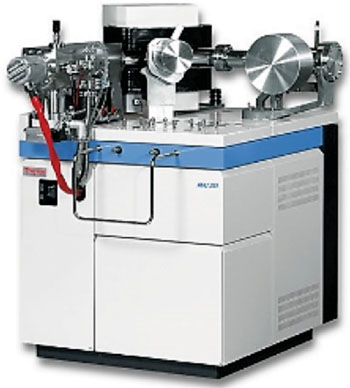Breath-Test Helps Diagnosis of Delayed Gastric Emptying
By LabMedica International staff writers
Posted on 07 May 2015
The Gastric Emptying Breath Test (GEBT) is a new noninvasive test to aid in the diagnosis of delayed gastric emptying, known as gastroparesis and has been officially approved. Posted on 07 May 2015
Current tests used to diagnose gastroparesis typically involve the use of a small amount of radioactive material or imaging equipment, so testing must be conducted in specialized outpatient centers; however the GEBT can be used in broader settings.

Image: A stable gas isotope ratio mass spectrometer (Photo courtesy of Thermo Scientific).
According to the US Food and Drug Administration (FDA; Silver Spring, MD, USA) who have approved the GEBT, scientists conducted a clinical study using data from 115 participants who would typically undergo a gastric emptying test. All participants underwent testing with both the GEBT and gastric scintigraphy; the standard of care for measuring gastric emptying that requires ingestion of a test meal containing a radioactive material.
The GEBT, conducted over a four-hour period after an overnight fast, is designed to show how fast the stomach empties solids by measuring carbon dioxide in a patient’s breath. Patients have baseline breath tests conducted at the beginning of the test. They then eat a special test meal that includes a scrambled egg-mix and Spirulina platensis, a type of protein that has been enriched with carbon-13, which can be measured in breath samples.
Carbon-13 (13C) is a naturally existing non-radioactive form of the common element carbon-12 (12C). Both 12C and a very small amount of 13C are normally found in exhaled carbon dioxide. By adding 13C to the test meal, the GEBT can determine how fast the stomach empties the meal by measuring the ratio of 13C to 12C collected in breath samples at multiple time points after the meal is consumed compared to baseline utilizing a gas isotope ratio mass spectrometer.
The scientists compared diagnostic results from both the GEBT and scintigraphy and found that GEBT results agreed with scintigraphy results 73% to 97% of the time when measured at various time points during the test. No deaths or serious adverse events occurred during clinical studies, but some study participants reported nausea and stomach discomfort during the test. The GEBT is produced by Advanced Breath Diagnostics (Brentwood, TN, USA).
Alberto Gutierrez, PhD, director of the FDA Office of In Vitro Diagnostics and Radiological Health, said, “The GEBT is another option for aiding in the diagnosis of gastroparesis. It can be performed in any clinical setting since it does not require the health care professionals administering the test to undergo special training or to take special precautions related to radiation emitting compounds.”
Related Links:
US Food and Drug Administration
Advanced Breath Diagnostics













